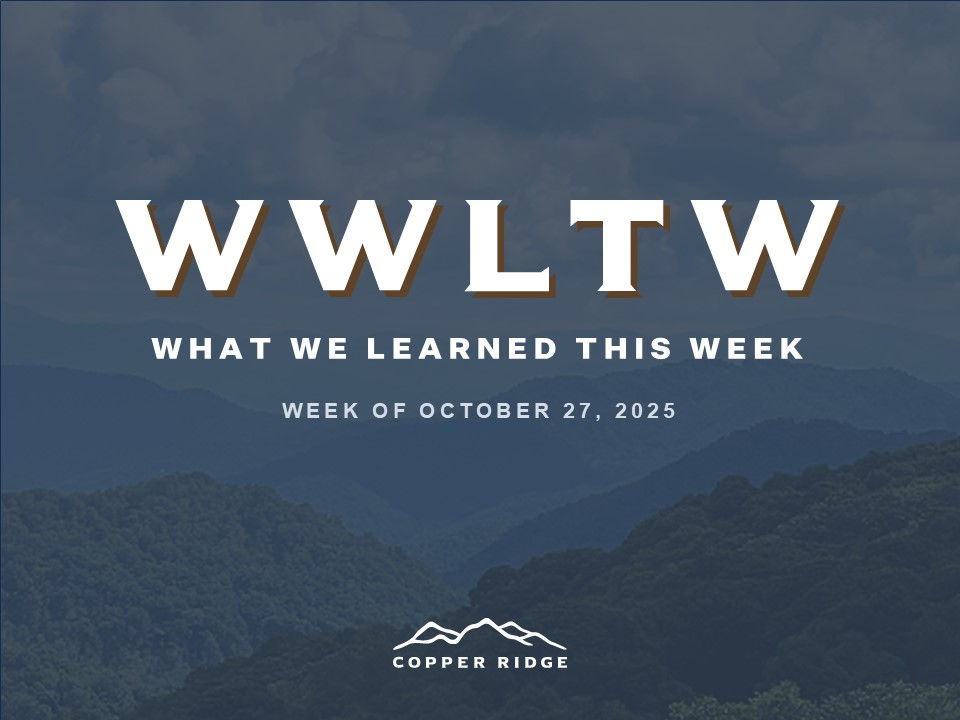What We Learned This Week
- Tyler Smith

- Jan 30
- 3 min read
Big Market Swings, Big AI Headlines: It’s hard to have made it through this week without hearing the name DeepSeek. The Chinese AI competitor has sent shockwaves through the market after unveiling its latest model over the weekend, triggering a staggering sell-off. More than $1 trillion in market value evaporated on Monday, with Nvidia alone shedding over $500 billion—marking the largest single-day market cap loss in history for any company.
So why is everyone panicking? In simple terms, DeepSeek has reportedly built a model that rivals the best offerings from OpenAI, Google, and Meta—at a fraction of the cost and in a fraction of the time. Even more concerning for Nvidia investors, the company claims to have trained its model for just $5 million using downgraded Nvidia chips—due to U.S. export restrictions—compared to the hundreds of millions spent by U.S. firms on similar models. This challenges the prevailing assumption that AI advancement is tied to ever-increasing GPU demand, which is central to Nvidia’s sky-high valuation.
But here’s the thing—we don’t actually know what any of this means yet. The market, as usual, has taken a “shoot first, ask questions later” approach. There’s no confirmation that DeepSeek truly achieved these cost efficiencies or that it avoided using Nvidia’s most advanced chips. Some speculate it did use them but doesn’t want to publicize that fact given the trade restrictions in place. Even if the cost claims are accurate, we still don’t know whether this signals a fundamental shift in AI development or if it simply proves that layering and optimizing existing models is possible at lower cost (which could even drive more GPU demand).
What we do know is that markets hate uncertainty. And when you introduce uncertainty into a space with extreme valuations, the reaction is swift and severe. But for investors with a longer-term view, it’s best to let the dust settle before drawing conclusions.
Starbucks is Getting Back to Basics: Starbucks shares rallied this week following its earnings report—not necessarily because the results were overly impressive, but because of CEO Brian Niccol’s clear focus on fixing the fundamentals. Niccol, known for his turnaround at Chipotle, emphasized two key priorities: improving the in-store experience and streamlining ordering logistics. His message resonated with investors eager to see Starbucks return to being a well-run coffee company. On the customer experience front, the company has already begun making changes, such as reinstating self-serve condiment bars, offering ceramic mugs for in-store guests, and bringing back handwritten names on orders—small but meaningful touches aimed at restoring the brand’s personal feel. Operationally, Starbucks is also revamping how it processes orders across different channels—store, app, and drive-thru—to reduce complexity for both employees and customers.
While it’s still too early to gauge the full impact, Niccol's approach is encouraging. Starbucks remains a strong brand despite its recent struggles, and investors are betting that even modest operational improvements could unlock significant value. Given Niccol’s success at Chipotle, there’s a case to be made that he can steer Starbucks back in the right direction. Time will tell, but for now, the market likes what it sees.
Nervous Investors Sent GM Shares Tumbling: Auto makers have been at the center of discussions around potential shifts in trade and tariff policy under the new Trump administration. This week, GM provided the first forward-looking commentary from a major manufacturer as it reported earnings—and investors didn’t love what they heard. On the surface, the results were strong, with solid beats on revenue and earnings, along with slightly better-than-expected guidance. However, during the earnings call, CEO Mary Barra noted that the company had not factored in any potential impact from rumored Trump trade policies. That comment sent shares tumbling. Given GM’s significant manufacturing footprint in Mexico, where increased tariffs are a major risk, the market saw this as a guidance set at a best-case scenario—with little room for error if stricter policies materialize.
It’s an interesting dynamic. GM could have taken the opportunity to set a more conservative outlook and blame external uncertainties, but instead, they chose to leave trade policy out of the equation entirely. This could mean they feel better about the situation than they’re letting on, or it may simply be too uncertain to model with any accuracy. Either way, the market has now effectively lowered expectations, which could set the stage for a relief rally if trade tensions don’t escalate as feared.




Comments